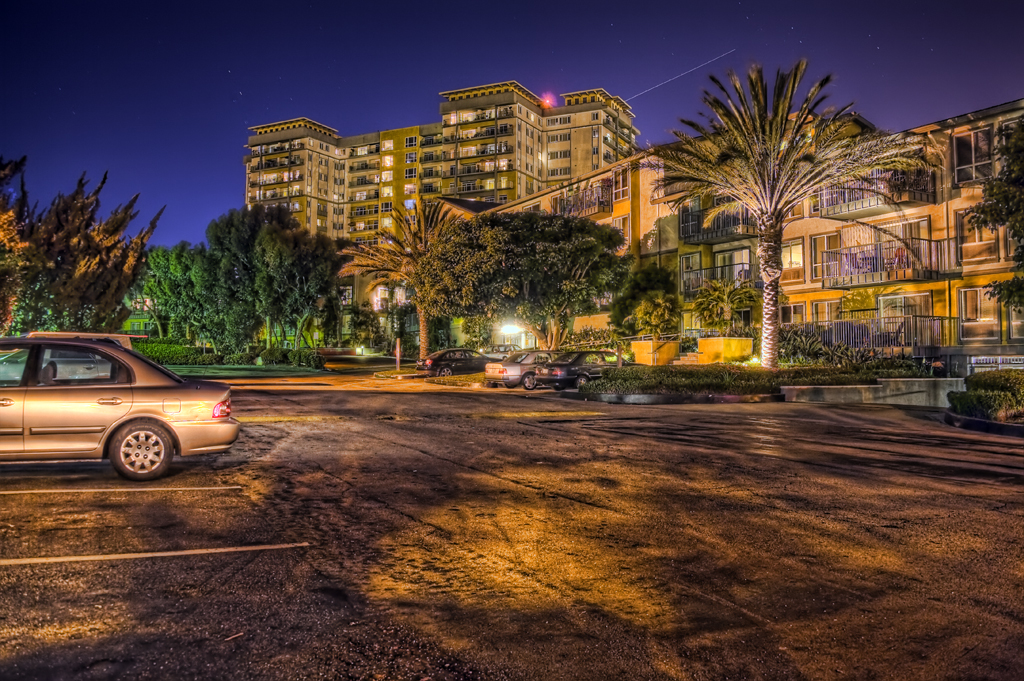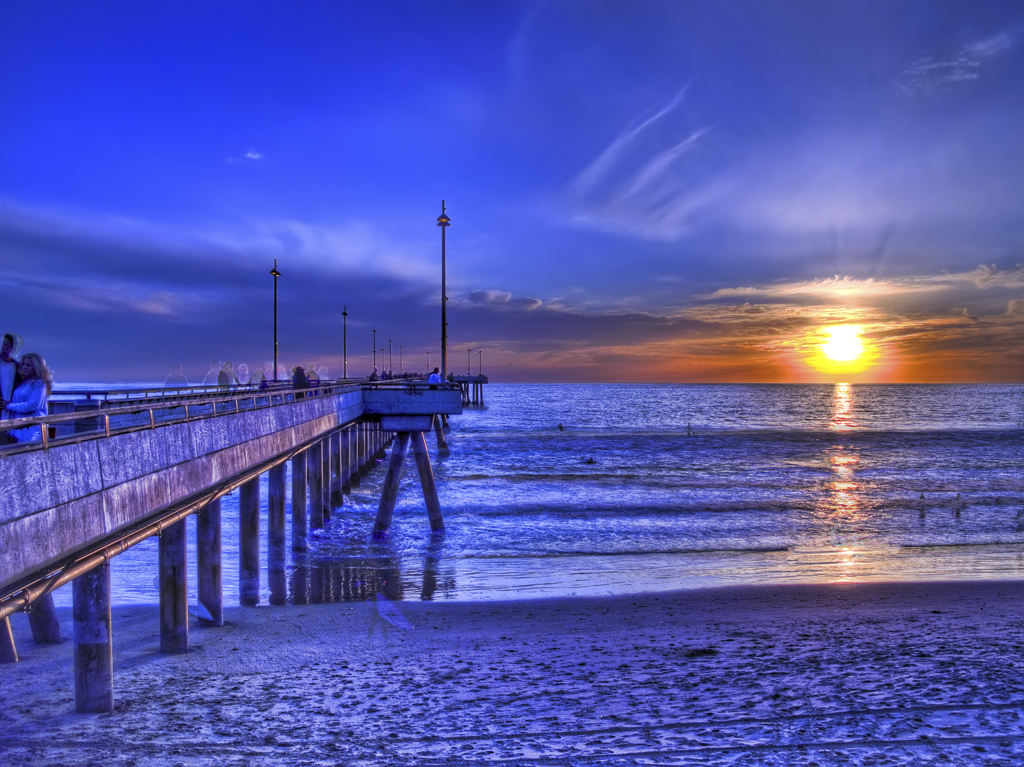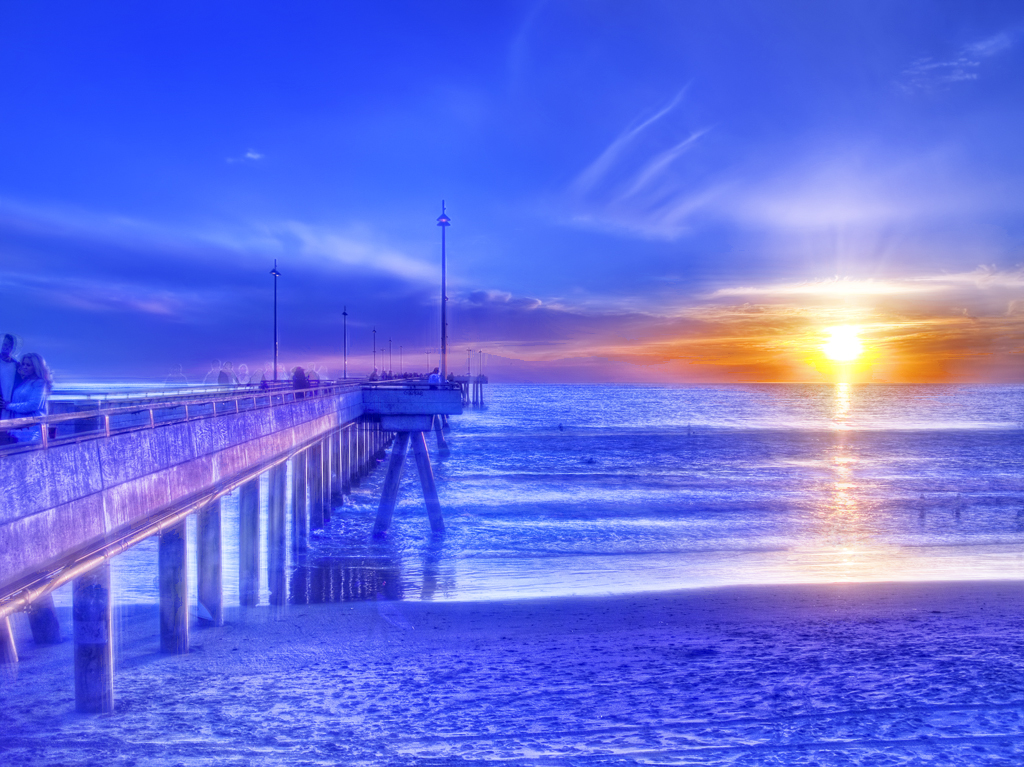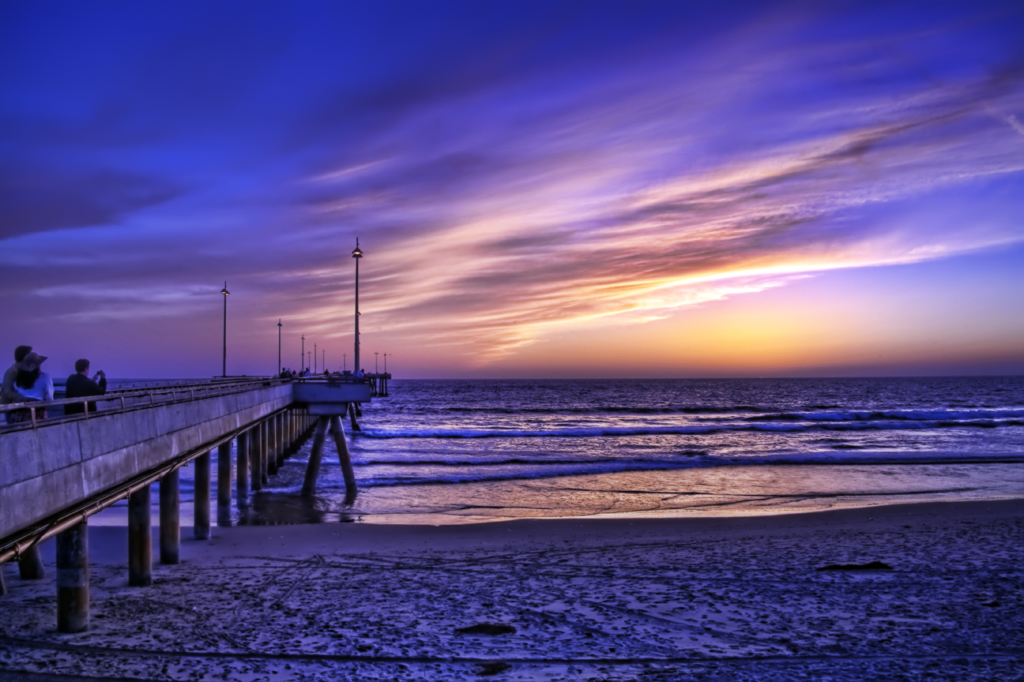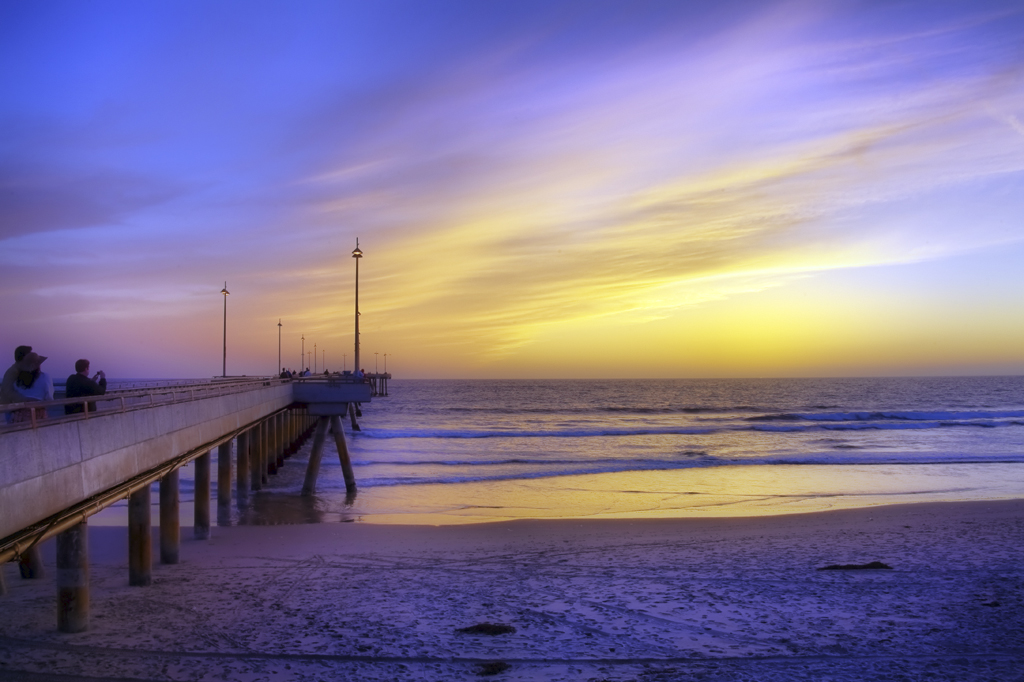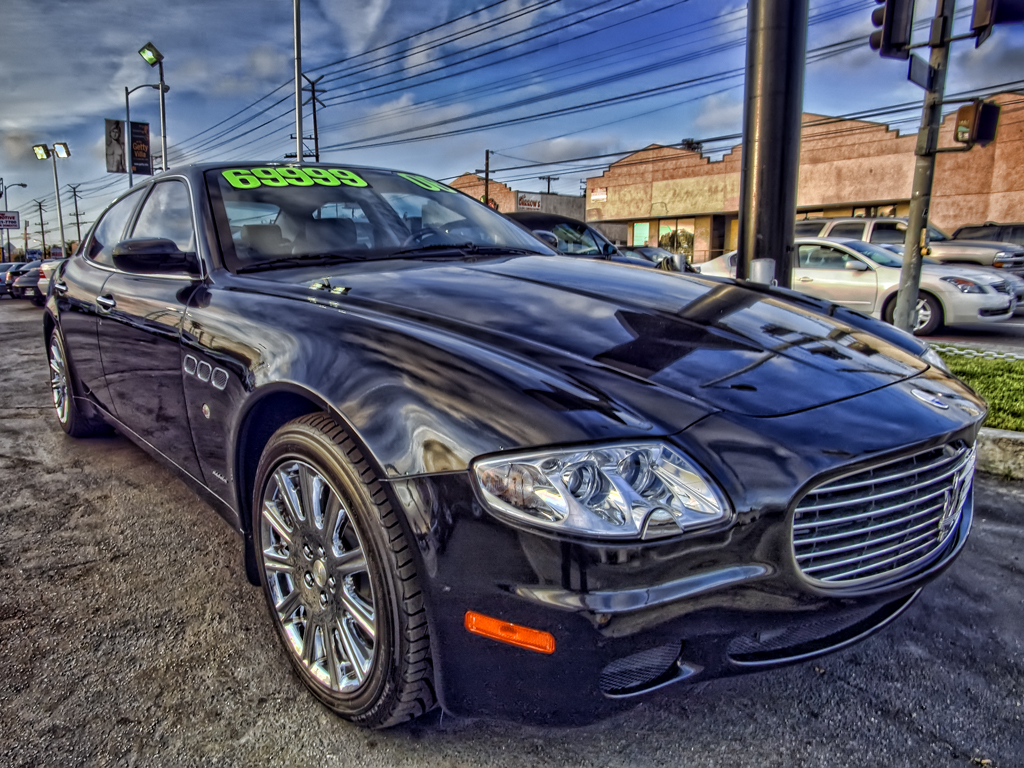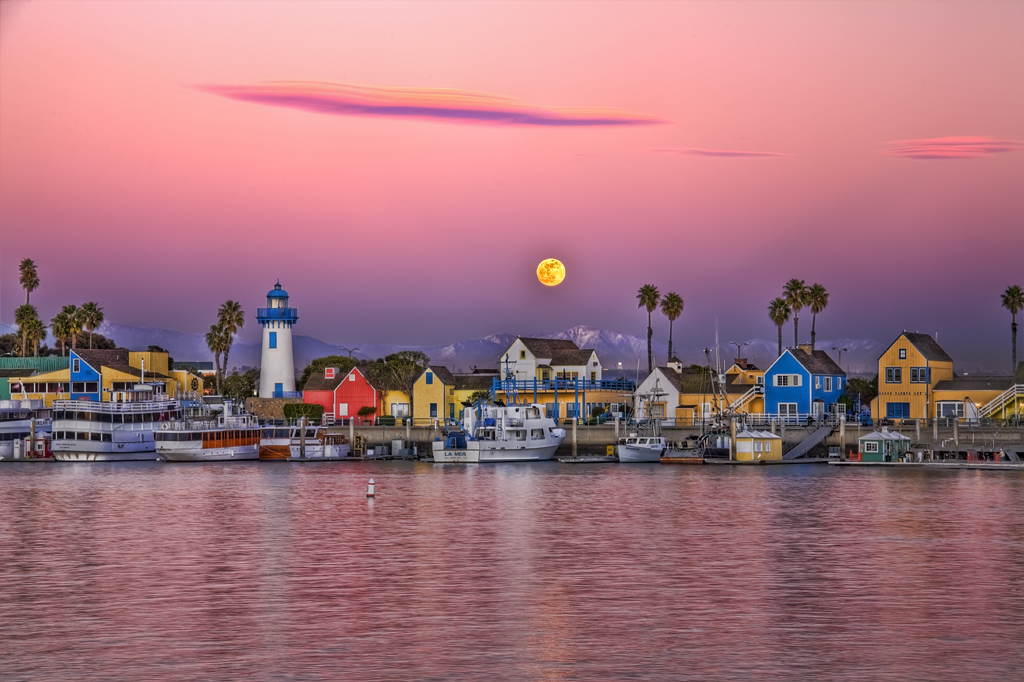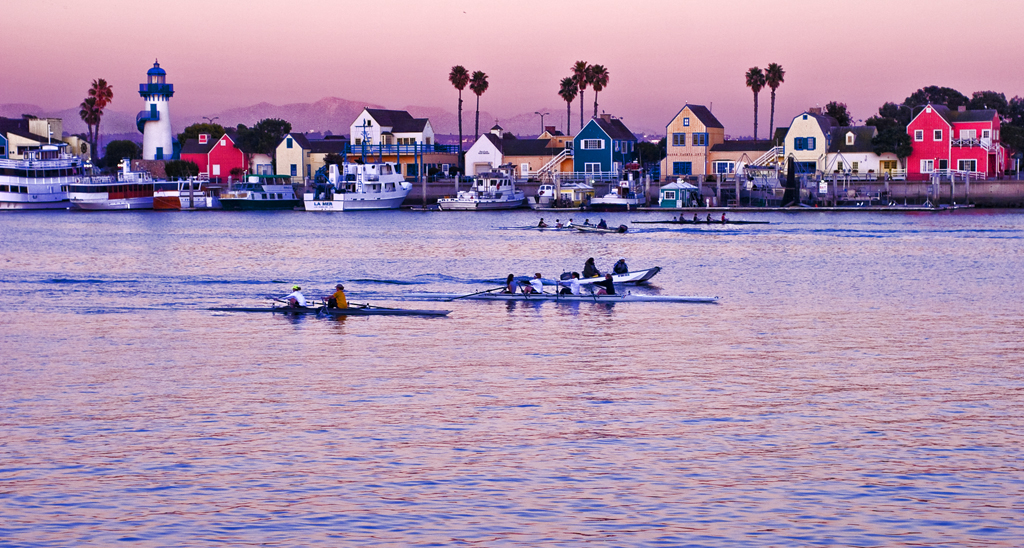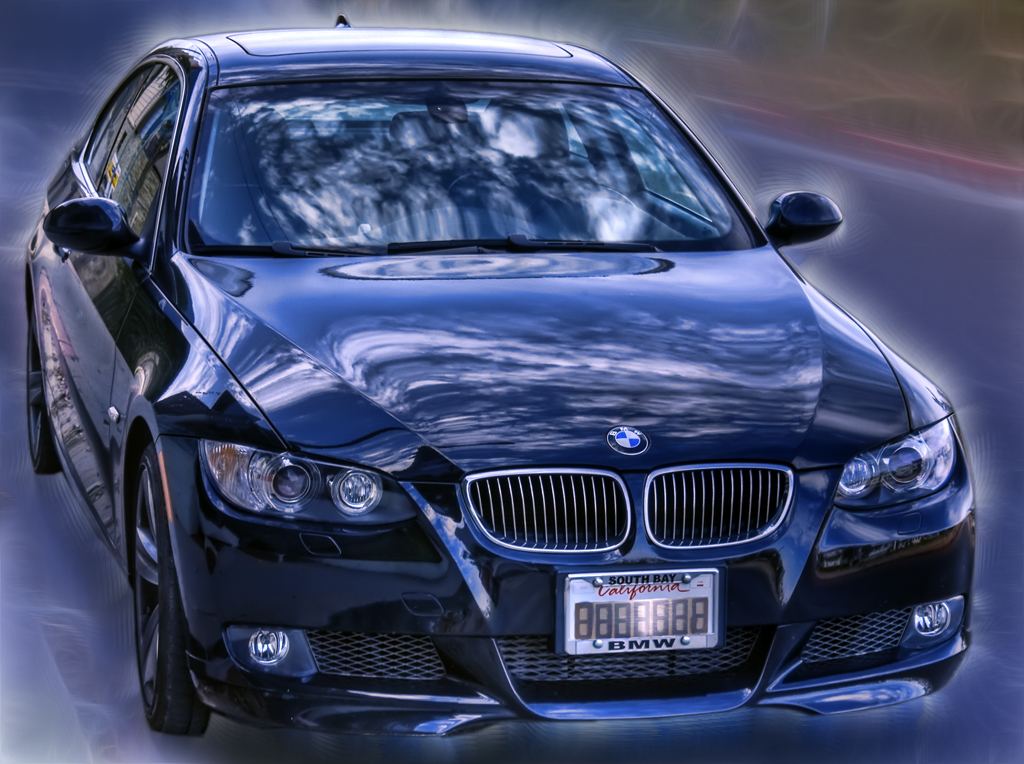 What is an HDR?
What is an HDR?There is a debate on in the various HDR Flickr groups, in fact, all over the internet as to what an HDR is or is not. If you want to get into it you can the technical opinion and debate here:
discussionFlickr photographer with a lot of links about HDRI'm going to attempt my take on it based on my experience using HDR files at work and at home.
We probably should define it first - the following is from
wikipedia - "In image processing, computer graphics, and photography, high dynamic range imaging (HDRI or just HDR) is a set of techniques that allows a greater dynamic range of luminances between light and dark areas of a scene than normal digital imaging techniques. The intention of HDRI is to accurately represent the wide range of intensity levels found in real scenes ranging from direct sunlight to shadows."
What?
Okay let's try this again from a photography point of view:
Photographers use "dynamic range" for the luminance range of a scene being photographed; or the limits of luminance range that a given digital camera or film can capture; or the opacity range of developed film images; or the reflectance range of images on photographic papers.
Graduated neutral density filters are used to increase the dynamic range of scene luminance that can be captured on photographic film (or on the image sensor of a digital camera). The filter is positioned in front of the lens at the time the exposure is made; the top half is dark and the bottom half is clear. The dark area is placed over a scene's high-intensity region; usually the sky. The result is more even exposure in the focal plane, with increased detail in the shadows and low-light areas. Though this doesn't increase the fixed dynamic range available at the film or sensor, it stretches usable dynamic range in practice.[14]
In the domain of digital imaging, algorithms have been developed to map the image differently in shadow and in highlight to better distribute the lighting range across the image. These techniques are known as high dynamic range imaging.
Whoa way too technical!
See this isn't easy - here's still another - no less obfuscating:
Dynamic range is a term used frequently in numerous fields to describe the ratio between the smallest and largest possible values of a changeable quantity, such as in sound and light.
On imaging it refers to the ratio of the highest and brightest color tone value to the lowest.
For example, a good quality LCD display has a dynamic range of around 1000:1 (commercially the dynamic range is often called the "contrast ratio" meaning the full-on/full-off luminance ratio), and some of the latest CMOS image sensors now have measured dynamic ranges of about 11,000:1 (reported as 13.5 stops, or doublings).[1] Paper reflectance can achieve a dynamic range of about 100:1.
The above comes closer to what I know - the ratio of the darkest part of an image to the lightest.
Cameras - film or digital - can typically provide a 6 f-stop range of light values accurately before it begins to peak at white or black. HDR's attempt to broaden that ratio of dark to light past the point of what your camera interprets.
The image above was a black car reflecting a very bright sky on mostly clear day with a few clouds in the sky. So there was a broad range to begin with. On the image below the afternoon sun lit up the boat while the restaurant and dock cast it's shadows on the water.
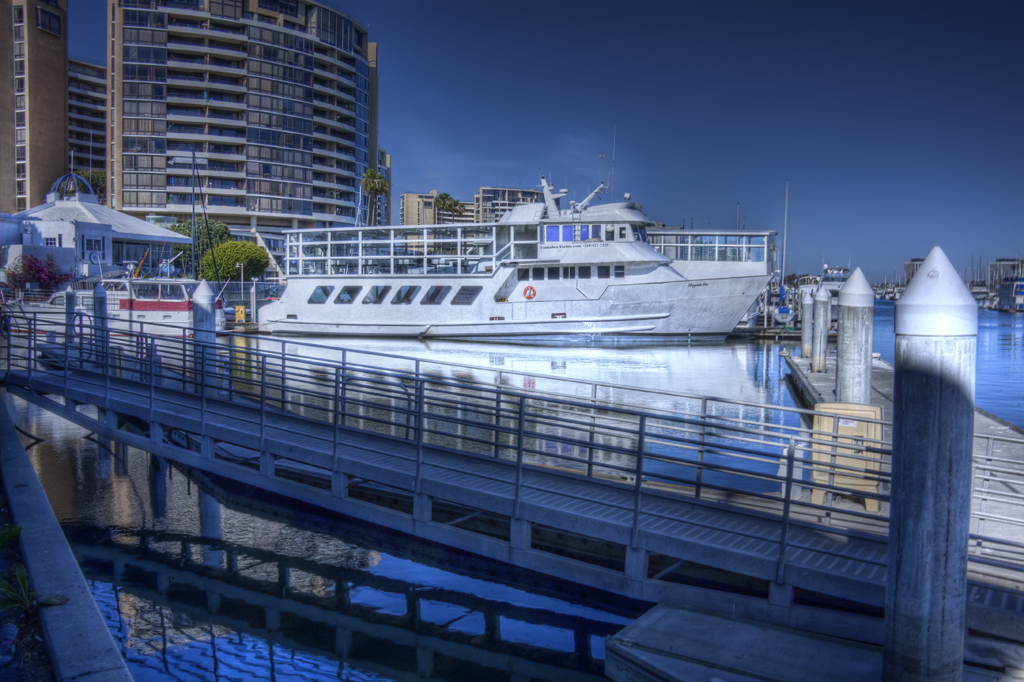
So this is a technical definition of what an HDR is - a tonal ratio covering the entire range of light in an image from darkest to lightest.
I'm going to publish this and then go on to how to shoot an HDR my way(s,) in a future post. In my next post I'm going to talk about tonemapping, HDR's, and Single Image RAW file processing.

